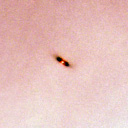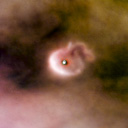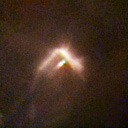ملف:Orion Nebula with proplyd highlights (captured by the Hubble Space Telescope).jpg

حجم هذه المعاينة: 800 × 525 بكسل. الأبعاد الأخرى: 320 × 210 بكسل | 640 × 420 بكسل | 1٬024 × 672 بكسل | 1٬280 × 840 بكسل | 2٬560 × 1٬680 بكسل | 15٬503 × 10٬176 بكسل.
الملف الأصلي (15٬503 × 10٬176 بكسل حجم الملف: 99٫1 ميجابايت، نوع MIME: image/jpeg)
تاريخ الملف
اضغط على زمن/تاريخ لرؤية الملف كما بدا في هذا الزمن.
| زمن/تاريخ | صورة مصغرة | الأبعاد | مستخدم | تعليق | |
|---|---|---|---|---|---|
| حالي | 16:14، 18 ديسمبر 2009 |  | 15٬503 × 10٬176 (99٫1 ميجابايت) | Tryphon | {{Information |Description=The en:Orion Nebula is home to tens of what could be fledgling en:planetary systems. In this image, six of these modest "smudges" with big potential are highlighted (from top down): [[:File:Proplyd 132-1832 in the Or |
استخدام الملف
الصفحة التالية تستخدم هذا الملف:
الاستخدام العالمي للملف
الويكيات الأخرى التالية تستخدم هذا الملف:
- الاستخدام في en.wikipedia.org
- الاستخدام في eu.wikipedia.org
- الاستخدام في fi.wikipedia.org
- الاستخدام في fr.wikipedia.org
- الاستخدام في hi.wikipedia.org
- الاستخدام في sv.wikipedia.org
- الاستخدام في zh.wikipedia.org








